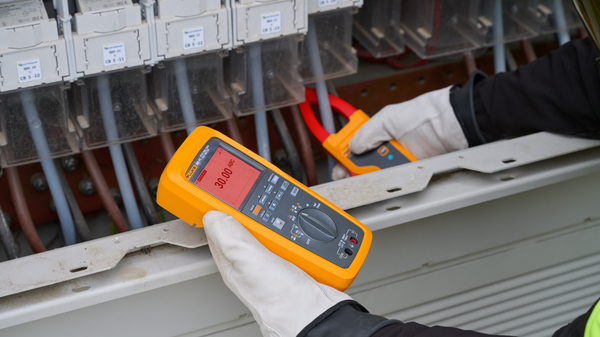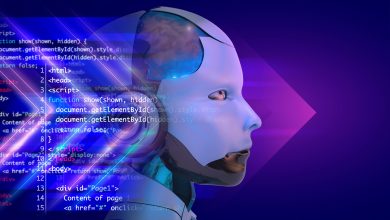
In recent decades, the electrical contractor industry has experienced a wave of innovative solutions that seek to improve accuracy, safety, and efficiency. But like many other industries, there is one new technology that is making an unprecedented splash—Artificial Intelligence (AI). With the potential that this new technology offers, the possibilities for developing the capabilities of electrical contractors are endless, as AI is set transform the world as we know it.
Science Fiction or A New Reality?
At its core, the job of an electrical contractor involves measurement—voltage, current, resistance, and beyond. Historically, these measurements have relied on the precision of the tools in hand and the expertise of the technician using them. But what happens when AI is introduced into this equation?
AI, coupled with machine learning (ML), allows for the analysis of vast datasets at speeds and accuracies far beyond human capability. By recognising patterns in data that might be invisible to the human eye, AI can enhance the precision of measurements and reveal insights that were previously unattainable. For instance, while the fundamental modalities of measurement (such as voltage or temperature) remain the same, AI can interpret the data from these measurements in new ways. This could mean identifying subtle anomalies in electrical systems before they become major issues, saving both time and money on repairs and downtime.
Moreover, AI can integrate data from multiple modalities—such as combining thermal imaging with voltage measurements—to provide a more comprehensive understanding of a system’s health. Imagine a tool that not only measures but also analyses and predicts potential issues, offering recommendations on the spot. This isn’t science fiction; it’s the future of electrical work.
The Advantages of AI for Electrical Contractors
For electrical contractors, the most pressing question is often, “How will this make my job easier or more efficient?” AI-powered tools promise to do exactly that.
1. Automating Routine Tasks: Many tasks that electrical contractors perform are repetitive—taking the same measurements across multiple sites, for example. AI can automate these tasks, aggregating data, performing initial analyses, and even generating reports. This automation not only saves time but also reduces the potential for human error.
2. Enhancing Safety: Safety is paramount in electrical work. AI can act as a second set of eyes, double-checking measurements, ensuring that nothing is overlooked in the rush of a busy day. This added layer of safety is particularly valuable when working with high-voltage systems or in complex environments where multiple factors must be considered.
3. Simplifying Complex Analyses: Interpreting data, especially when dealing with complex systems, can be challenging. AI simplifies
this process by making inferences from the data collected, providing clear, actionable insights. For example, an AI-enabled tool might suggest the need for a harmonic filter after analysing a series of power quality measurements, or it might flag a specific voltage sag as a priority issue that needs immediate attention.
4. Reducing Training Time: As AI tools become more integrated into the workflow, they can also help bridge the skills gap that exists in the industry. For newer technicians who may not have extensive experience with older systems, AI can provide guidance and suggestions, effectively acting as a mentor. This reduces the need for extensive training and helps less experienced workers become proficient more quickly.
Potential Barriers to Overcome
While the potential benefits of AI are immense, there are also challenges that need to be addressed.
1. Ensuring Reliability and Safety: Electrical contractors rely on their tools to be accurate and reliable. Any AI implementation must meet the same high standards as the physical tools themselves. This means rigorous testing and validation to ensure that AI does not introduce errors or overlook critical issues.
2. Balancing Innovation with Usability: AI tools must be user-friendly. It’s not enough for a tool to be powerful if it’s too complex to use in the field. The key is to design AI interactions that feel natural, almost as if the AI is another colleague, knowledgeable and ready to assist without adding unnecessary complexity to the workflow.
3. Overcoming Resistance to Change: As with any new technology, there may be resistance to adopting AI, particularly from those who have been in the industry for a long time and are comfortable with traditional methods. The challenge will be demonstrating the tangible benefits of AI in a way that convinces even the most sceptical users.
The Future is Bright
Despite these challenges, the future of AI in electrical contracting is bright. Early adopters are already seeing the benefits of AI-enabled tools, from improved efficiency to enhanced safety. As the technology continues to evolve, we can expect even more sophisticated tools that further integrate AI into the daily workflow.
One area of significant potential is in predictive analytics. AI’s ability to analyse historical data and predict future issues could be a game-changer, allowing contractors to address problems before they occur. This proactive approach not only improves system reliability but also reduces the stress and pressure associated with unexpected failures.
Moreover, as AI becomes more integrated with the Internet of Things (IoT), the interconnectedness of devices will allow for seamless data sharing and more comprehensive system monitoring. The companies that succeed in this new landscape will be those that not only build great tools but also understand the complex workflows of their customers and can help them solve problems through a combination of hardware, software, and AI.
AI represents the next frontier in tool innovation for electrical contractors. By enhancing measurement accuracy, automating routine tasks, improving safety, and simplifying complex analyses, AI-enabled tools will empower contractors to work more efficiently and effectively. While there are challenges to overcome, the potential benefits far outweigh the risks. As we continue to develop and refine these technologies, the electrical contracting industry will be better equipped than ever to meet the demands of an increasingly complex and interconnected world.



